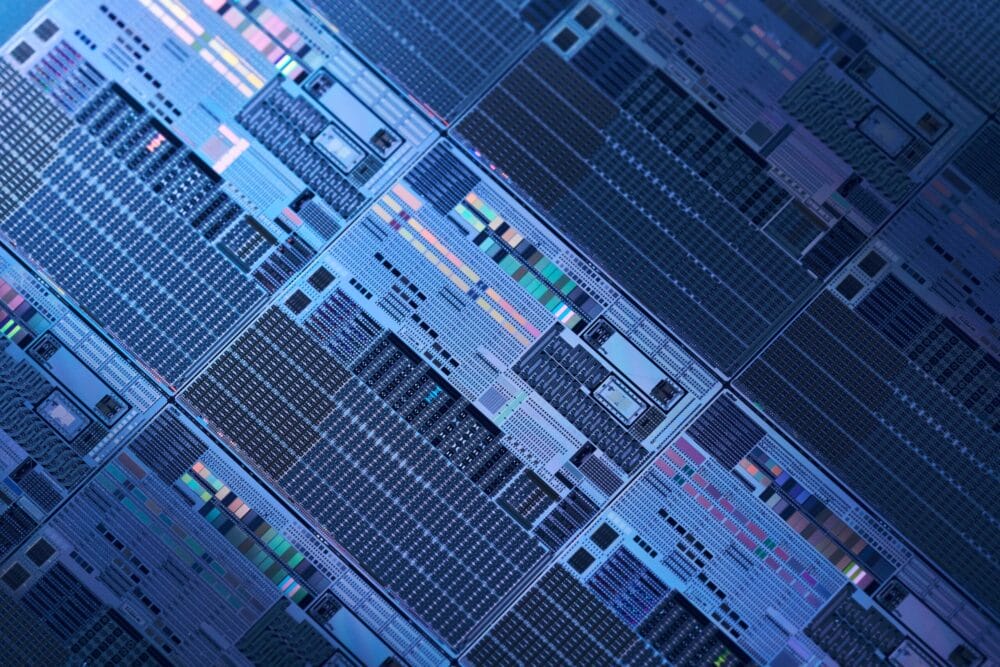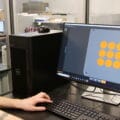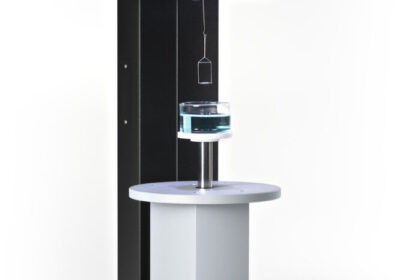Thanks to today’s touch-screen technology, interaction with a computer can be as instinctive as a conversation between two humans. Here, Ross Turnbull, Director of Business Development and Product Engineering at Swindon Silicon Systems at ASIC design and supply company Swindon Silicon Systems, discusses how Application Specific Integrated Circuits (ASICs) play an integral role in uniting man and machine.
Touchscreens now feature extensively in our daily lives, not least within our mobile devices, but also in retail, healthcare and industrial settings. More niche applications call for specialised touchscreens that are sufficiently sensitive to detect a human finger through thick glass, through gloves, or even at a distance above the screen’s surface.
Electronic challenges
Almost all modern touchscreens use the ‘projected capacitance’ technique, where a matrix of invisible conductors is embedded within the display. At each crossing point, the conductors form coupling capacitances between one another, at least partially through the air above the display.
A finger in close proximity reduces this coupling, albeit by a tiny fraction. The job of the touchscreen controller is to measure the numerous capacitances, usually by driving each wire in turn with a voltage stimulus and thus pushing small currents through them. By measuring the many tiny currents simultaneously, it is possible to perceive the effect of any touches and calculate where they occur.
Upon entering the controller, each wire’s signal is first passed through filtering components to reject interference. The signal is then amplified and sampled before being digitised by an analogue-to-digital converter (ADC). The replication of all this componentry, to serve the numerous wires in the panel, represents a significant challenge to the cost and form factor of the electronics.
Because the changes in capacitance are so subtle, great attention must be paid to noise when designing the controller. Furthermore, the many channels must operate at high frequency in order to win an acceptable ‘frame rate’ from the touch panel. Matching between the channels must be good in order to simplify subsequent processing, calling for tight control over circuit properties and stray capacitances.
The application of ASICs to these challenges
When such systems are initially prototyped, these electronic functions are provided by a multitude of off-the-shelf integrated circuits (ICs) supported by an array of capacitors and resistors. This is the optimal approach when prototyping, as it provides the opportunity to understand what specifications are important to the solution. But to translate a prototype into a cost and performance optimised high-volume product, developers should integrate as much of the circuitry as possible into an ASIC.
As ASICs are designed for the intended application, optimised performance tailored to touchscreen functionality can occur in faster response times, better signal processing and improved power efficiency compared to using off-the-shelf ICs. Additionally, ASICs allow for features and functionalities specific to industrial touchscreen requirements, enabling manufacturers to differentiate their products and meet specific market demands.
Therefore, ASICs are particularly necessary for touchscreen solutions in applications where performance, power efficiency and cost optimisation are critical factors. Such applications include industrial control panels, medical devices, automotive systems and certain consumer electronics.

ASICs development
Development projects for touchscreen ASICs typically proceed through several stages, from the definition of the ASIC to the design-in. While this may seem like quite some work, Swindon’s full turnkey (FTK) service — encompassing every element of an ASIC’s supply and design — makes it a worthwhile investment.
Naturally, this process starts with a solutions requirement analysis to define the functional requirements and performance specifications based on the industrial target application.
The architecture design including the integration of required components, communication interfaces and power management features as well as the circuit design, including transistor-level designs, signal processing blocks and power distribution networks comes next. After the layout design and the verification and testing stage, the
ASIC can be integrated into the touchscreen device’s circuitry to ensure proper functionality and compatibility with other components.

Swindon frequently designs and supplies custom, high-throughput, multi-channel solutions into human-computer interface applications, optimising the overall bill of materials and achieving form factors that are otherwise impossible. Modern high pin-count packages accommodate many channels in a single part, with excellent matching in properties. Because the cost of replicating identical channels is relatively low, the ASIC approach can be extremely effective in these applications.
The ASIC design process itself is heavily based on simulation, incorporating all relevant parasitic capacitance, resistance and inductance so that performance is assured. Noise, being so critical to touchscreen applications, can be accurately predicted and mitigated. The digital processing can also be integrated, either by deployment of processor IP or of custom synthesised logic, and the entire signal path can be optimised as one.
Touch-panels are just one application of ASICs, but they serve to demonstrate the value that integration can bring. The benefits are such that an ASIC sits behind every touch-panel we encounter in our daily lives and are critical to the production of many items we use, whether we know it or not.
Do you have an application that could benefit from an ASIC? Get in touch with the Swindon Silicon Systems team for a consultation here: https://www.swindonsilicon.com/contact-us/.







